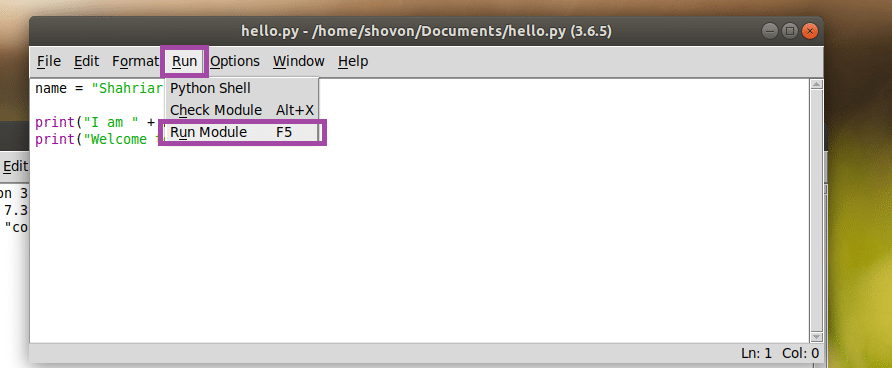

- #How to install pyqt5 for python linux console how to
- #How to install pyqt5 for python linux console upgrade
- #How to install pyqt5 for python linux console windows 8.1
- #How to install pyqt5 for python linux console code
- #How to install pyqt5 for python linux console download

Once installed, you should have a directory called PyQt5 inside Python’s site-packages directory.
#How to install pyqt5 for python linux console download
Go ahead and download the package(s) of your choice and complete the installation (details of installation are outside the scope of this tutorial). If you want an installation like I used in this tutorial, you can use the 64-bit Python 3.4 WinPython package. WinPython is portable, making it a great choice if you want to run multiple versions of Python or if you want an installation that won’t mess with anything else you have installed already. Windows users may also choose to install WinPython, which is a container that contains Python, many 3rd party Python packages, PyQt, Qt Designer, a coding IDE called Spyder, and IPython. I am using PyQt5 from the PyQt Downloads page, more specifically I used the 64-bit Windows installer: PyQt5-5.4.1-gpl-P圓.4-Qt5.4.1-圆4.exe You do not need to install Qt itself – PyQt contains the Qt Designer executable and all necessary Python packages (at least on Windows it does) ( Update: PyQt apparently doesn’t ship with Qt Designer anymore, you can try getting it via pip install pyqt5-tools or from a third-party installer). PyQt contains everything you need to start building GUIs in Qt Designer for use in Python.

Qt in Python is done via a package called PyQt. Note: I tried using Python 3.5 but it did not work with Qt – perhaps there’s a workaround but I did not explore this. I am using Python 3.4, and I’m going to assume that you already have it installed.
#How to install pyqt5 for python linux console windows 8.1
I am writing this post to show what steps I took in order to use Windows 8.1 64-bit with the latest versions of Python and Qt: Python 3.4 and PyQt 5. This post is inspired by the tutorial by Alex Fedosov, called “ Tutorial: Creating GUI Applications in Python with QT“, which uses Python 2.x, PyQt 3.x, and QT Designer 3.x and demonstrates the steps on a Linux operating system (Fedora or RedHat). Then, the *.ui file can be converted automatically into a Python class ready to be imported into your Python program. Qt Designer allows you to design your GUIs visually and save them in a *.ui file (which is just an XML file listing every component in your GUI and defining each component’s properties). Wouldn’t it be nice if we had a visual tool for making GUIs? A GUI for making GUIs? Enter Qt Designer (see featured image at start of post).
#How to install pyqt5 for python linux console code
However, designing the GUI is done purely in code which means that a simple dialog window may consist of ~500 lines of code and is tedious to move or resize elements. In an elevated PowerShell or command line with administrative access, type python get-pip.py to automatically install PIP.A common way of making Graphical User Interfaces (GUIs) in Python is to use Tk via the Tkinter package.
#How to install pyqt5 for python linux console upgrade

To install Python PIP on Ubuntu or Debian-based distributions, open a terminal and type sudo apt install python-pip for Python 2.x.
#How to install pyqt5 for python linux console how to
Here’s how to install PIP on various Linux platforms. For Python versions below 2.7.9 or 3.4, installing Python PIP on Linux will depend on the system package manager in use.


 0 kommentar(er)
0 kommentar(er)
